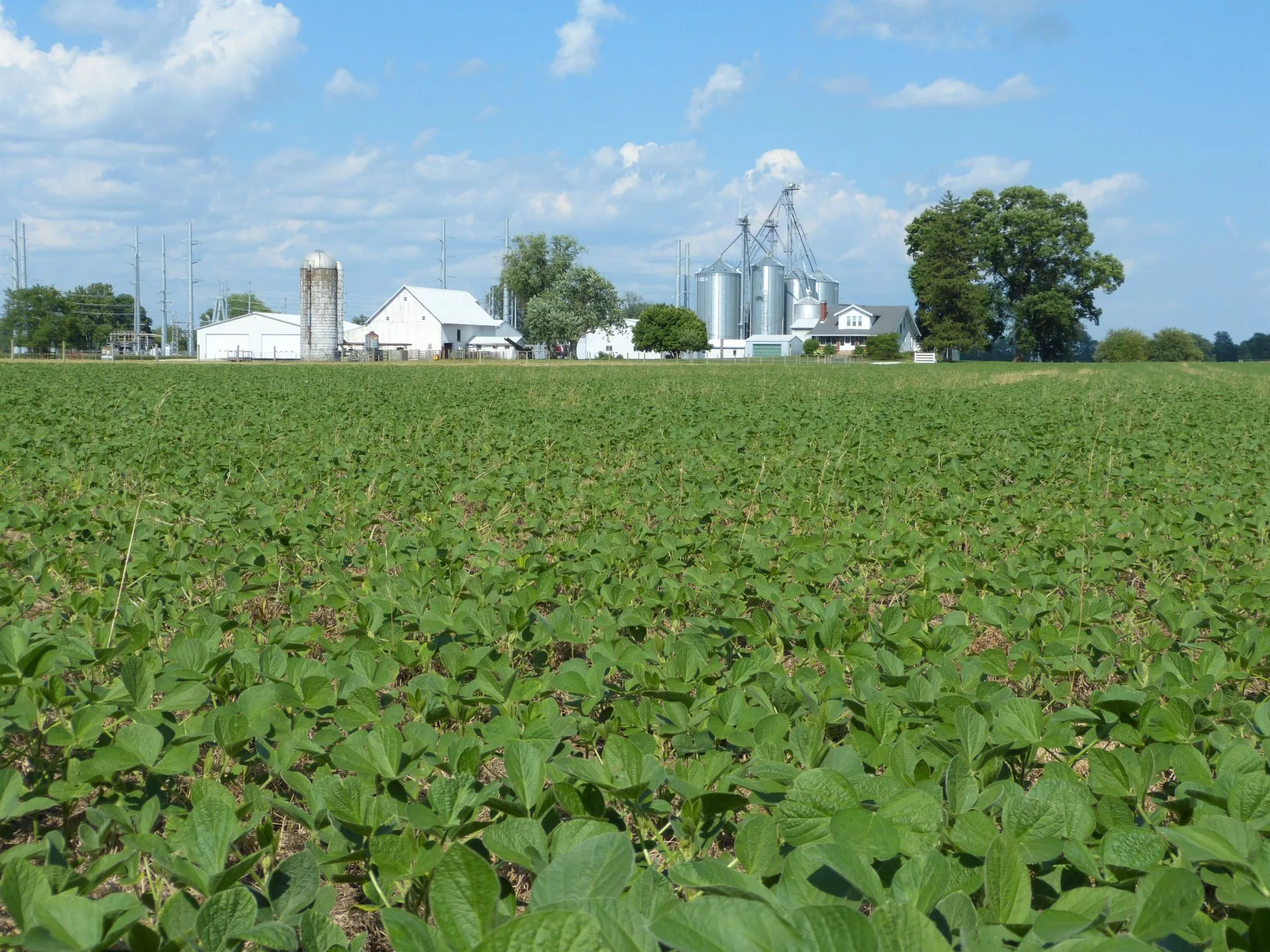A soybean field and farm in Johnson County, Indiana east of Greenwood and Whiteland. Photo: C.J. Miller / Hoosier Ag Today.
The American Soybean Association (ASA) is expressing concern after the U.S. Environmental Protection Agency (EPA) imposed additional restrictions on farmers—a move that seems to have followed adverse comments from environmental groups.
A new registration for glufosinate-P was announced October 18; however, EPA lagged in releasing the final label for that registration. The label is finally available, and with its public posting, additional, unwarranted restrictions are evident.
Alan Meadows, an American Soybean Association director who grows soybeans in Tennessee, responded, “EPA seems to have relented to pressure from environmental groups and decided to impose additional Endangered Species Act restrictions on farmers.”
In their glufosinate-P draft registration comments, environmental groups claimed the number of runoff points and the size of the spray drift buffers currently required by EPA are insufficient. In response to the comments, EPA expressed confidence in its own findings that the registration would not jeopardize species or their habitats. Further, the agency said the draft registration was informed by the Herbicide Strategy. However, in the final label, additional restrictions were included.
“Somewhere between the draft and final registration, EPA without explanation tripled the number of ESA runoff points required and imposed a new 10-foot mandatory ground spray drift buffer farmers must adopt to use the new glufosinate-P herbicide. Growers should be worried about the precedent this will set,” said Meadows.
According to EPA, the Herbicide Strategy and other ESA strategies are simply frameworks. ASA is concerned that with this decision, EPA has demonstrated it is willing to deviate from its own strategies to set more restrictive requirements for individual registrations. In this, the first new herbicide registration following the Herbicide Strategy being finalized, EPA has imposed additional restrictions above and beyond its previous safety findings.
In a similar move after finalizing the Vulnerable Species Action Plan in September, EPA signaled to the public that it would not impose new restrictions for VSAP species until the overly broad pesticide use limitation area maps for those species were refined. However, the final glufosinate-P registration contains restrictions for two of these species prior to map revisions, one of which, the Whorled Sunflower, was added last minute to the registration—and following the draft. Neither EPA nor commenters raised any concerns specific to the Whorled Sunflower, and yet the agency inexplicably opted to impose a strict VSAP avoidance area in this range, preventing farmers in this area from any use of glufosinate-P.
“The agricultural community should be very concerned,” Meadows concluded. “If this registration is any indication, the Herbicide Strategy could serve as only a base layer of restrictions on which EPA can then tack additional restrictions, including in response to pressure from environmental groups. This is not how the agency should implement a science-based regulatory system, as Congress intended.”
The new label for glufosinate-P can be viewed here.
Source: American Soybean Association

